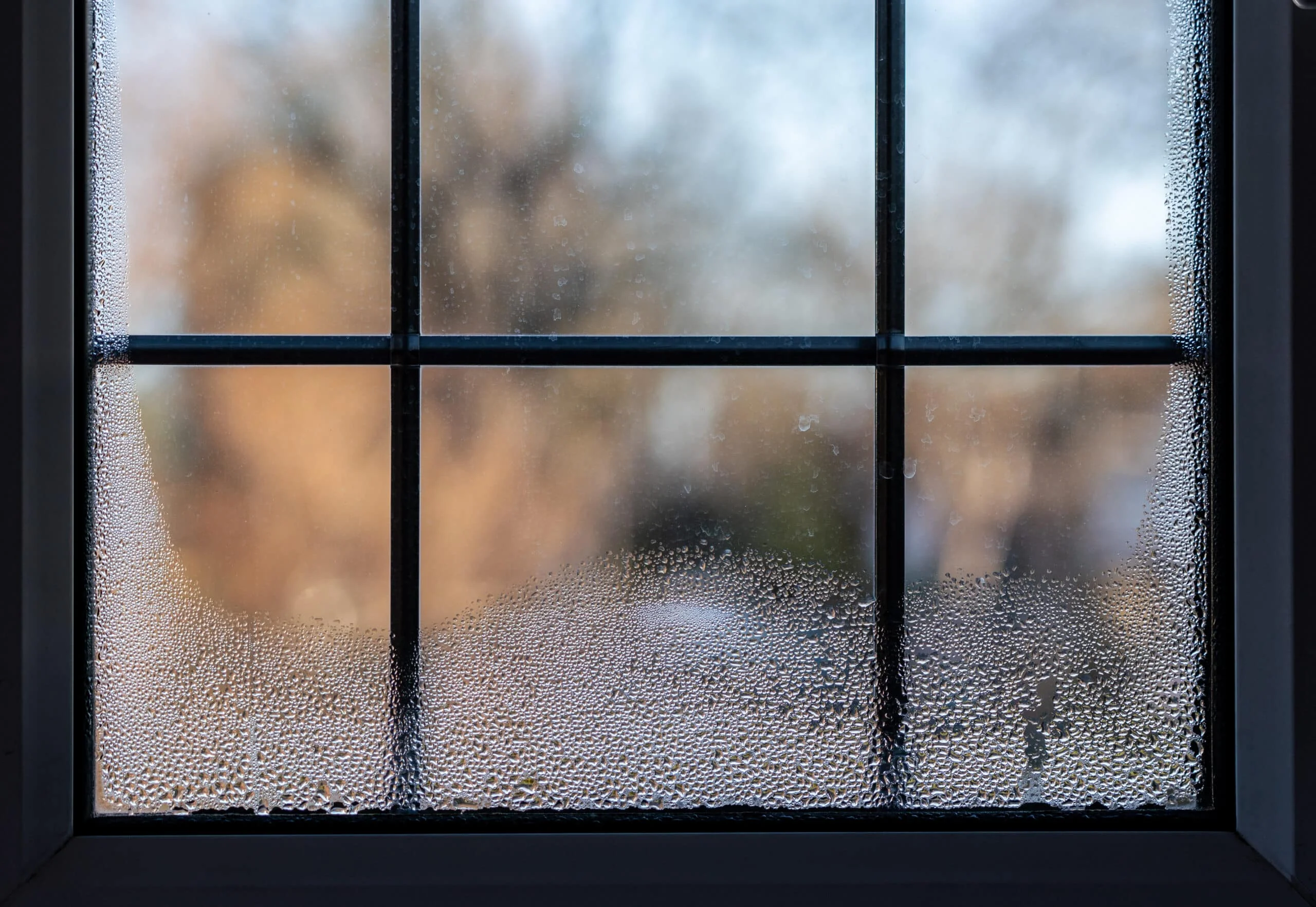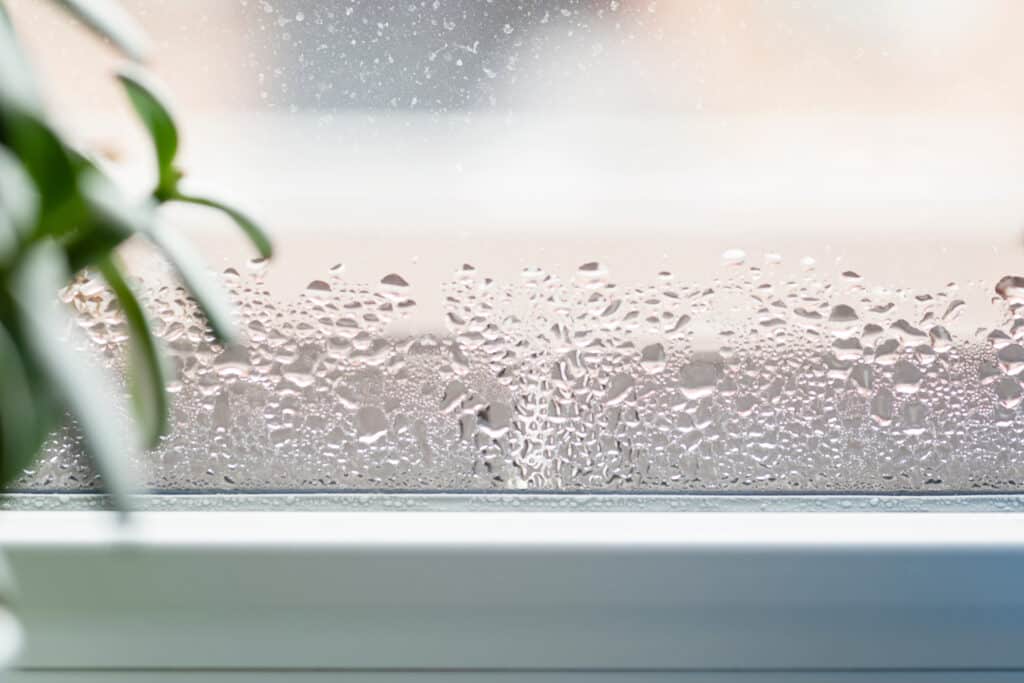
Why does my double glazing suffer from condensation?
This all depends on where the condensation is forming. If the condensation is inside the unit itself, then this is likely to be down to a fault with the double glazed unit itself – usually the seal – and the unit will need to be replaced. If the condensation is on the inside but can be wiped off, it is probably caused by poor ventilation. For example, if you don’t have an extractor fan in the bathroom then moisture in the air from the bath or shower can settle on the glass as condensation. Opening the window will usually reduce the condensation.
If the condensation you are experiencing is on the outside of your window, it means that the low emissivity glass is doing a good job of keeping the heat in your home, meaning that the outer pane of glass is cooler than the air outside. With single glazing or older double glazing, the glass units aren’t as effective at keeping the warmth in, which results in the outer pane being warmer and less susceptible to condensation.
Governing factors in the formation of condensation
Outside condensation is more likely in Spring and Autumn when we have clear nights and the temperature can drop quite quickly overnight, resulting in the dew-point being reached very quickly and condensation forming on the outside pane. The dew point varies depending on the outdoor temperature and the amount of moisture in the air.
You may also notice that not all of the panes in your home are affected in equal ways by early morning condensation.
This is because even subtle differences in the orientation and the position of objects outside the window can change the surface temperature of the glass to the point that one pane suffers and another does not. Any object, for example an overhang, a canopy or a tree, blocking off the window to a clear night sky may also have an effect. There is not a great deal that can be done to avoid the risk of condensation forming on the outside.
Turning the heating up more would have an effect but is understandably not a great option. Outside condensation does not often last long and soon disappears once the sun has risen and warms up the outer pane.

How can I reduce condensation in my home?
Ventilation
Ventilation is essential to reduce condensation, especially in the main living areas of your home, therefore open these windows each day to allow a change of air and keep internal doors closed. Positioning of heaters under windows also allows the warmth of a room to reach the glass surface. Allow free movement of air behind curtains by positioning them 150-200mm away from the glass and provide gaps at the top and bottom.
Bedrooms
If possible, adjust the temperature of the room when the outside temperature falls to compensate.
Bathrooms
Keep the door closed especially when in use & immediately after bathing to keep the water vapour from transferring into other areas of your house. Always ventilate room after use.
Living rooms
Where there are no open fires or where existing flues are blocked off, fit wall vents and make sure they are kept clear. If a gas fire has been installed in an existing fireplace and vents are not provided for in the design of the fire, vent holes should be drilled into the back-plate.
Kitchens
Keep internal doors closed and windows open or install extractor fans or cooker hoods to vent outside.
Double glazing cannot cause condensation. It provides insulation by virtue of its construction. As the inner glass is at a higher temperature than the outer pane, the incidence of condensation, when compared under identical conditions with single glazing, will be reduced.
If none of the above recommendations has a significant effect, you will need to consult a heating and ventilation engineer.